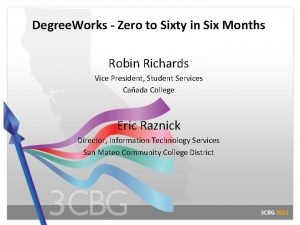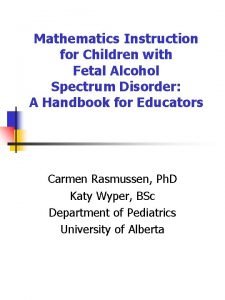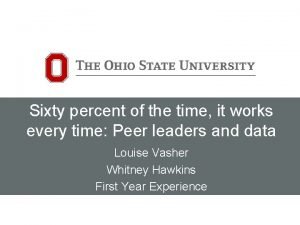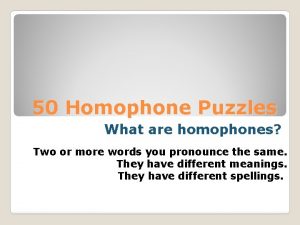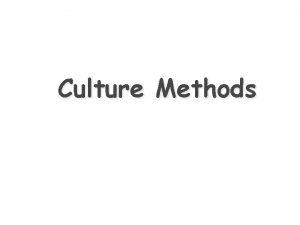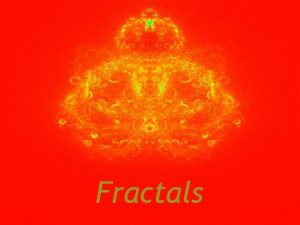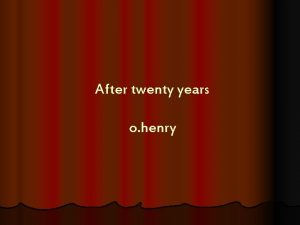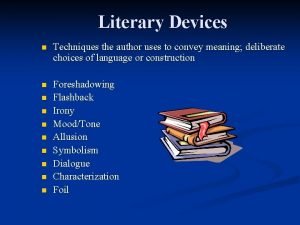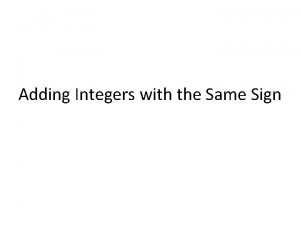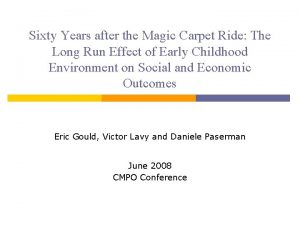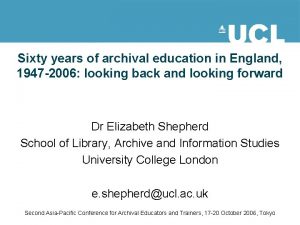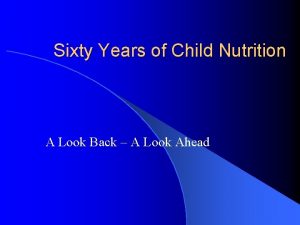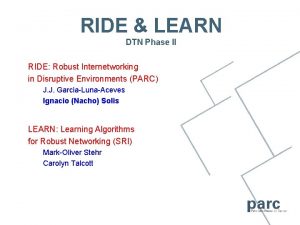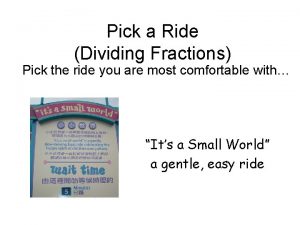Sixty Years after the Magic Carpet Ride The































- Slides: 31

Sixty Years after the Magic Carpet Ride: The Long Run Effect of Early Childhood Environment on Social and Economic Outcomes Eric Gould, Victor Lavy and Daniele Paserman May 2009

Economic Effects of an Individual’s Early Childhood Conditions p Major interest to social scientists: how much does the environment matter for outcomes? p Yet, drawing causal inference about this relationship is complicated due to: n n Unmeasured individual heterogeneity that affect outcomes and childhood environment Severe data limitation that restrict long follow up from childhood to adulthood.

This Study p Exploits the airlift of Yemenite immigrants to Israel in 1949 (Operation Magic Carpet) as a natural experiment to overcome the identification problem. p Basic idea: Yemenite immigrants were scattered across the country in a manner unrelated to potential outcomes. n Some selection, but on variables that matter little for final outcomes. Unlikely to bias results.

Background

Background p A Jewish community has been present in Yemen since very ancient times. p 20 th century: mostly artisans and merchants, some farmers and land-owners. About one third in Sanaa area. p Initial trickle of migration to Israel in the first part of the 20 th century. p Push for migration increases as Arab-Jewish relations deteriorate as a consequence of intensifying hostilities in Palestine.

Background GDP per (2000 Infant GDP per capita USD) capita (2000 1950 USD) USA mortality rate 2000 11, 233 2000 196034, 364 2000 Israel 4, 916 USA 11, 233 34, 364 26 22, 236 7 Yemen ? Israel 4, 916 22, 236 32 1, 0815 Yemen 1950 ? 1, 081 Egypt 1, 257 Ethiopia Egypt 1, 257 330 4, 535 Ethiopia 330 725 225 81 4, 535 186 72540 162 92 Jewish neighborhood in Sanaa, circa 1930

Operation Magic Carpet p Rescue operation to airlift the entire Yemenite Jewish community to Israel, between late 1948 and 1950, mainly at end of 1949. p By the end of the operation in early 1950, approximately 50, 000 had been flown to Israel

Operation Magic Carpet p Immigrants were dispersed throughout the country into 4 makeshift absorption camps. Duration of stay: up to one year. p Many newly created agricultural communities (moshavim) built exclusively for Yemenite immigrants. p Moreover: n n n p Homogenous background. Uprooted from traditional way of life, transplanted into modern society Complete culture shock. Lack of understanding of spoken Hebrew. Patronizing attitude of Ashkenazi establishment. Reliance on Israeli bureaucrats to tell them where to live, what to do. Overall chaotic and precarious situation of the entire country. As a result, they were scattered across the country in a manner irrespective of their background.

Data p Population of interest: all people born in Yemen in 1945 -50 who migrated to Israel in 1948 -51 (migrated as very young children). p Survey conducted between June and October 2006. Population between 56 and 61 years old: very much “longterm” outcomes! p Questions on: n Family background in Yemen. n Location of residence and living conditions upon arrival, and in subsequent two localities. n A variety of social and economic outcomes: employment, income, marriage, fertility, health, cultural tastes, and their children’s education

The survey p List of 5, 776 names of people born in Yemen between 1945 and 1950. p Private company located phone numbers of 4, 160 (72%). p 3, 365 completed interviews. Approximately 10% discarded because immigrated before 1948 or after 1951. 2, 991 completed surveys (>80% of those contacted. ) p Final sample: 2, 927 individuals. p 130 questions, ~20 minutes to complete.

The survey p Respondents were cooperative and knowledgeable. p Information on family background in Yemen internally consistent. p Appendix Table 1: High socioeconomic status correlated with: n n p Father’s occupation: merchant (+), craftsman(-). Owned land livestock, hired employees. Lived in a major city in Yemen. Community or religious leader. Survey information consistent with data from the 1960 census.

Methodology p Identify “childhood environment”: locality of residence, circa 1955. p Construct three summary measures of the childhood environment: Whether the home had running water, sanitation and electricity. [We view this as an overall measure of the environment and not necessarily of physical infrastructure] n n Whether the locality of residence was in an urban environment with a good economic infrastructure. n Whether the locality of residence was a Yemenite enclave (a place built specifically for Yemenite immigrants).

Random assignment?

Random assignment? p Family socioeconomic status is balanced with respect to childhood environment. p Some evidence that people from urban (agricultural) background in Yemen more likely to end up in urban (rural) environment in Israel. p Effect size ratios suggest that the differences are small (most ESs < 0. 25). Simple OLS likely to produce similar estimates to more sophisticated techniques for dealing with selection on observables. p Strategy: control for all observable family background characteristics, show that selection effect is modest.

Why selection bias is probably small p Similar pattern of selection between boys and girls. p Likely that government officers responsible for assignment had similar set of information available to us. p Imbalanced characteristics have very little effect on outcomes, suggesting that the unobservable correlates of these characteristics also have no effect on outcomes. p Within groups with only agricultural or only urban background, no sorting.

Table 5: Estimates of the Effects of the Childhood Environment on Education Outcomes

Table 5: Estimates of the Effects of the Childhood Environment on Education Outcomes

Why selection bias is probably small p Three groups: farm owners who lived outside city (noted as “rural”), city dwellers who did not own a farm (noted as “urban”) and the rest (noted as “others”). p Matching on most important imbalanced observable characteristic. p The first group clearly had farming/agricultural activities in Yemen, the second clearly did not, and the third is a mixed group. p In all these three samples we find almost perfect balancing in terms of background characteristics: - ‘Rural’ and ‘others’ samples: only 4 out of 60 correlations are significant - Urban: only 6 out of 60 correlations are significant p The pattern of results from these samples is similar to that of the full sample.

Table 6: Estimates of the Effects of the Childhood Environment (‘All Conditions’) on Education Outcomes in Three sub-samples

Other outcomes p The effect of a good environment: n Marriage and fertility: higher age at first marriage, fewer children, more likely to be divorced (women only). n Health: No effect. n Employment: Women more likely to be employed. n Attitudes and assimilation: no effect on political attitudes, less religious (men and women), more cultural assimilation. n Children’s outcomes: some evidence that boys are affected by the quality of the environment of the father.

Why different effects for women and men? p No differences in the age distribution of men and women. p No differences in the year of immigration between men and women. p Equal probability of men and women to move from first location and men have a slightly higher tendency to move from second and third location.

Additional evidence from the 1961 Census p Data from 1961 Census, able to identify location of residence in 1956. p 14 -16 year old girls much less likely to be enrolled in school in rural localities built after 1948 for immigrants: 74% vs. 62%. p However, much more likely to be employed: 15% vs. 39%.


Why different effects for women and men? p Our interpretation: interaction of low benefits/high costs of schooling and cultural norms. n n n p Lifetime labor supply of women expected to be very low, especially in rural areas and ethnic enclaves where traditional cultural norms more likely to be enforced. Costs of attending school are higher. Also, age at immigration has a much larger effect on educational outcomes of females (our calculations from the 1995 Census) Not consistent with: n n n Simple labor supply (wages higher in the city). Substituting for mother’s work (mothers didn’t work, in either urban or rural areas). Girls had poorer health in rural areas (does not explain why they are at work).

Conclusion p We have exploited the natural experiment provided by Operation Magic Carpet to study the long run effects of the childhood environment on social and economic outcomes. p High quality initial environment has a large positive effect on most women’s outcomes: education, marriage and fertility, employment, cultural assimilation. p Smaller or no effect for men.

p Does the environment affect long-term outcomes? p Of course it does! Yemen today Israel today GDP per capita 1, 081 22, 236 Infant mortality rate 81 5 % with zero educational attainment, age 15+ Barro-Lee, 1990 Israeli census 1995, people with father born in Yemen Males 61. 3 0. 9 Females 92. 7 1. 1

Thank you!




 Bedroom silver carpet
Bedroom silver carpet Enthymeme
Enthymeme If any man come after me
If any man come after me After me after me after me
After me after me after me Rustic dance after a sleigh ride
Rustic dance after a sleigh ride How long is four score and seven years?
How long is four score and seven years? Sheep years to human years
Sheep years to human years 300 solar years to lunar years
300 solar years to lunar years Sixty million and more
Sixty million and more Degree in six months
Degree in six months Robertson cooked meat medium
Robertson cooked meat medium Element three sixty
Element three sixty Sixty in latin
Sixty in latin Seconds to 1 hour
Seconds to 1 hour Strudon
Strudon Hp blue carpet
Hp blue carpet Carpet patch differentiation
Carpet patch differentiation Sixty percent of the time it works every time
Sixty percent of the time it works every time Ceiling homophone
Ceiling homophone Gullistan carpet
Gullistan carpet Pure culture techniques
Pure culture techniques A herd of elephants flies past you at sixty summary
A herd of elephants flies past you at sixty summary Sierpinski carpet perimeter
Sierpinski carpet perimeter Ten twenty thirty
Ten twenty thirty Pour plate method
Pour plate method After twenty years analysis
After twenty years analysis Hen duo xie
Hen duo xie Irony in harrison bergeron
Irony in harrison bergeron Present perfect ride
Present perfect ride Ride teacher evaluation rubric
Ride teacher evaluation rubric Adding integers warm up
Adding integers warm up A drunken ride a tragic aftermath answers
A drunken ride a tragic aftermath answers









